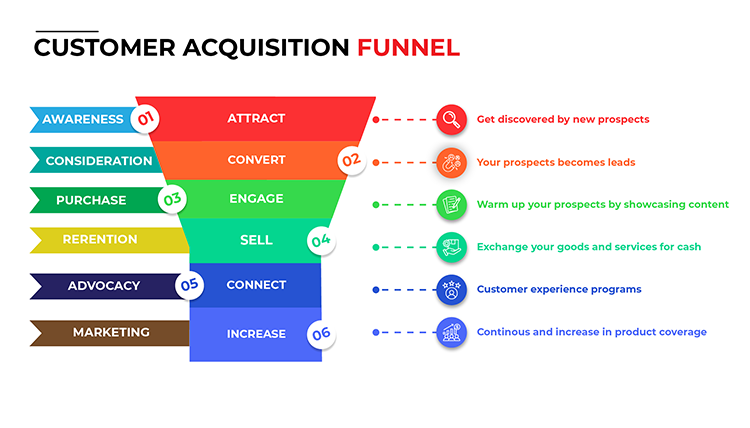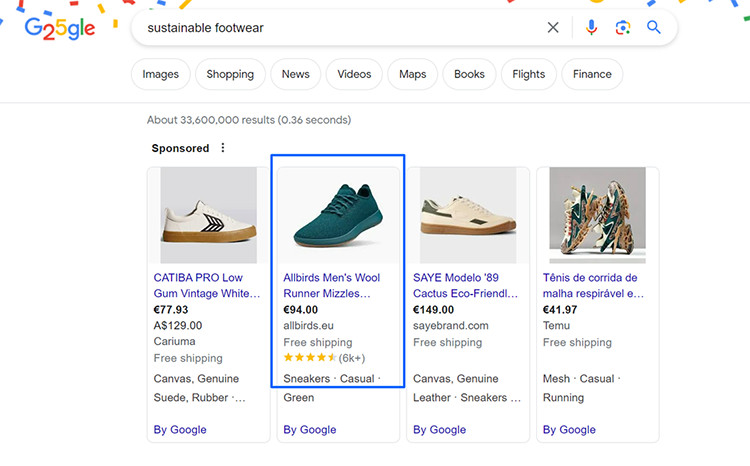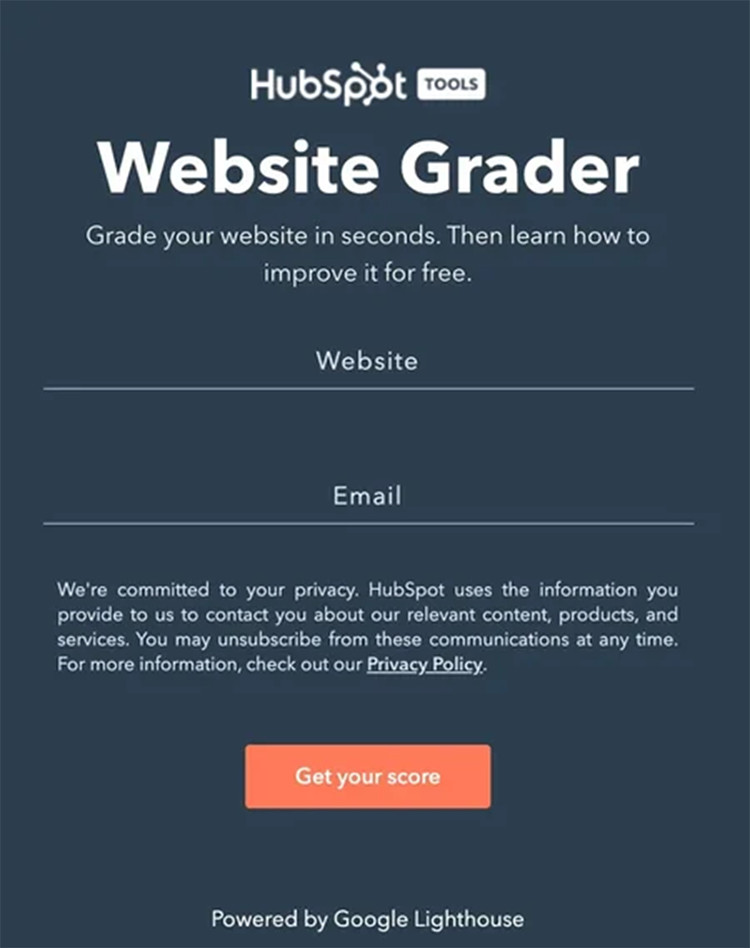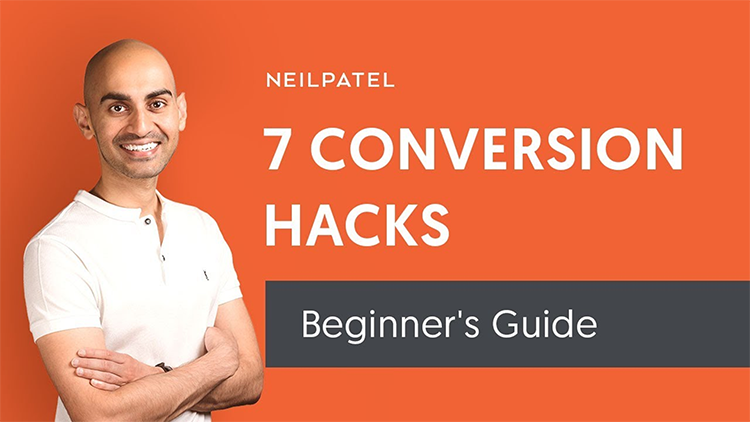Free
The Complete Guide To Customer Acquisition In Digital Marketing
Unlocking the Power of Customer Acquisition in Digital Marketing. Every entrepreneur yearns for that competitive edge in the bustling digital landscape. But with so many strategies out there, what truly leads to success?
Enter customer acquisition in digital marketing.
Mastering this art can be a game-changer, transforming curious clicks into loyal customers. But how can you do it? In this comprehensive guide, we’ll provide you with actionable steps specifically designed for entrepreneurs. We’ll also highlight the incredible impact that tools like ClickFunnels can have on your efforts. And to inspire you, we’ll share real-life case studies showcasing these strategies in action.
But first, let’s get a solid understanding of what customer acquisition really means.
Customer acquisition is the lifeblood of a thriving business. It’s about attracting new customers and clients to your brand, guiding them on a journey from discovery to that all-important first purchase. Sounds simple, right? Well, it’s actually influenced by multiple touch points, from a casual scroll on social media to a deep dive into product reviews.

Key factors that influence customer acquisition include:
Brand Awareness: How visible and recognizable is your brand online?
Value Proposition: What unique value does your product or service offer?
User Experience: How easy and enjoyable is it for users to interact with your brand online? This includes your website’s design, navigation, and checkout process.
Engagement and Retention: It’s not just about attracting customers, but also keeping them engaged and coming back for more.
Consider the incredible success story of Gymshark, a fitness apparel brand. From humble beginnings, they skyrocketed to fame, thanks to strategic influencer partnerships and a deep understanding of their target audience’s digital behavior.
Now, let’s explore why customer acquisition is so vital in the world of digital marketing.
Think of customer acquisition as the queen on the chessboard of marketing. It’s powerful, versatile, and absolutely essential.
Here’s why:
Fueling Revenue and Growth: More customers mean more sales. But in the digital realm, it’s not just about quantity. A well-executed acquisition strategy allows you to target customers who are likely to bring in higher lifetime values, resulting in more revenue from repeat purchases and referrals.
Enhancing Brand Reputation: In today’s digital age, every customer you acquire has the potential to become a brand ambassador. Their positive reviews, social media mentions, and word-of-mouth recommendations can amplify your brand’s reach exponentially.
Gaining Competitive Advantage: Standing out in the vast digital marketplace is crucial. A strong customer acquisition strategy ensures that you’re not just another face in the crowd. It positions your brand as the top choice for potential customers, outshining your competition.
Facilitating Business Innovation: Continuously acquiring customers means constantly receiving valuable feedback. This influx of fresh perspectives can be a goldmine for innovation. It helps you understand market trends, changing preferences, and areas for improvement, allowing you to adapt and innovate your business.
Optimizing Marketing ROI: Digital marketing can be expensive, but by focusing on customer acquisition, you can make every dollar count. Tools like ClickFunnels can help entrepreneurs streamline their marketing funnels, maximizing returns on their investments. Remember, it’s not about how much you spend, but how wisely you allocate your resources.
Let’s take a look at the Dollar Shave Club as a prime example. This startup revolutionized the razor industry with a simple yet brilliant customer acquisition strategy. Their viral launch video tapped into a market tired of overpriced razors, propelling them to a multi-million dollar success story.
In a nutshell, customer acquisition is more than just a process. It’s the lifeblood of any ambitious business in the digital age. Ignoring it is like setting sail without a compass – you might move, but not in the direction you desire.
Join us on this journey to unlock the power of customer acquisition in digital marketing. Get ready to take your business to new heights!
Unlock the Secrets to Winning Customers in 2023: 6 Proven Tactics
Want to know how to acquire customers in the fast-paced digital world? Look no further! We’ve got 6 customer acquisition tactics that are actually working in 2023, complete with real-world examples.
1. Get Noticed on Google
It’s no secret that being on the first page of Google is crucial for success. If you’re not there, you’re missing out on potential customers. Learn how to optimize your website with relevant keywords and get found when it matters most. We’ll show you how.
Mobile Matters
In a world obsessed with smartphones, having a mobile-friendly website is a must. Discover the steps to ensure your site looks great and loads quickly on any device. Boost your user experience and increase mobile sales like top brands.
Dominate Local Searches
If you have a physical store or serve a specific area, you need to be visible to local customers. Learn the secrets of local SEO and watch your foot traffic skyrocket. We’ll show you how to manage your Google My Business listing and attract customers from your community.
Stand Out in Search Results

Get an edge over your competition with rich snippets and schema markup. Learn how to make your website shine in search results and grab users’ attention. Take a cue from successful recipe blogs and showcase what makes you unique.
Master the Advertising Funnel
Stop wasting money on generic ads. Learn how to construct an advertising funnel that captivates potential customers at every stage of their journey. We’ll walk you through the steps to create targeted campaigns that drive conversions.
Tell Your Brand’s Story
Engage and captivate your audience with compelling video content and eye-catching graphics. Learn how to create brand awareness and showcase your unique value proposition. Step up your advertising game and reel in those customers.
Don’t miss out on these proven tactics that will supercharge your customer acquisition in 2023. It’s time to take your digital marketing to the next level. Let’s get started!
Seal the Deal: Closing the Sale
What is it: The crucial final step where potential customers become actual buyers.
How to do it:
Make sure your website has a smooth and user-friendly checkout process.
Use tools like ClickFunnels to create landing pages that drive conversions by featuring clear calls-to-action and testimonials.
Real-world example: Blinkist, an app that provides condensed book summaries, effectively guides visitors towards subscribing by using clear value propositions, offering free trials, and showcasing user testimonials on their landing pages.
2. Mastering the Advertising Funnel
Building an advertising funnel is like telling a story. Each stage plays a part in guiding your audience towards a specific goal. With careful planning and a focus on the customer journey, brands can turn casual viewers into loyal customers.

3. Get the Most out of Sponsorships
In a world full of direct advertisements, sometimes the most powerful form of marketing is a recommendation from a trusted source or platform. Sponsorships offer this advantage. However, modern partnerships go beyond just paying for exposure. They focus on authentic engagement and mutual benefits. So, how can your brand effectively leverage sponsorships in the digital age? Let’s explore this arena.
Event Sponsorships:
What is it: Partnering with events that align with your brand, such as conferences, webinars, or live-streams.
How to do it:
Identify events that attract your target audience.
Offer financial support or valuable resources in exchange for branding opportunities both online and offline.
Real-world example: Red Bull has become synonymous with extreme sports and cultural events by sponsoring events like the Red Bull Cliff Diving World Series. This strategy not only increases their brand visibility but also aligns their product with excitement, youth, and innovation.
Influencer Collaborations:
What is it: Partnering with digital influencers to promote your brand or product to their engaged followers.
How to do it:
Find influencers whose audience matches your target demographic.
Collaborate on genuine content that resonates with the influencer’s style and your brand message.
Real-world example: The skincare brand Glossier attributes much of its success to influencer partnerships. Instead of scripted promotions, they often gift products to influencers, resulting in authentic reviews and organic brand endorsements.
Podcast Partnerships:
What is it: Sponsoring episodes or segments of popular podcasts, a rapidly growing medium.
How to do it:
Identify podcasts with a listenership that aligns with your target audience.
Offer sponsorship in exchange for ad slots, product mentions, or even co-branded episodes.
Real-world example: Mattress brand Casper has effectively utilized podcast sponsorships by partnering with a variety of podcasts, from true crime to health and wellness. This approach allows them to tailor their message to different demographics while maintaining a consistent brand voice.
Branded Content & Native Advertising:
What is it: Collaborating with media outlets or platforms to create branded content that provides genuine value and seamlessly fits the platform’s style.
How to do it:
Partner with trusted media platforms that cater to your audience.
Co-create content that subtly integrates your brand, but primarily focuses on delivering value or entertainment.
Real-world example: Netflix teamed up with The New York Times to create an in-depth article about women inmates, coinciding with the release of their popular show Orange Is The New Black. This piece effectively promoted the show while providing informative content in The Times’ style.
Branded Content & Native Advertising:
Leveraging sponsorships in the digital age is all about creating authentic connections rather than blatant brand placement. It involves integrating your brand into platforms and moments that matter to your audience, ensuring positive associations and resonance.
4. Mastering the Art of Email Marketing
In the ever-changing world of digital marketing, there’s one strategy that has stood the test of time: email marketing. Its directness and personal touch have proven to be effective in reaching customers. But to truly harness its power, you need more than just a monthly newsletter. You need a well-crafted email marketing funnel. So, how can you dial in your email marketing funnel for optimal results? Let’s dive in.
Dial In Your Email Marketing Funnel
The Entry Point: Lead Magnets
What it is: Offer something valuable, like an e-book or discount, in exchange for an email address.
How to do it:
Figure out what your audience values the most.
Promote your lead magnet across different platforms with enticing calls-to-action.
Real-world example: Digital marketing expert Neil Patel offers a free SEO analyzer tool on his website. Users can receive detailed SEO insights by providing their email address, effectively growing his subscriber list.
The First Impression: Welcome Series
What it is: Send a series of emails to new subscribers to introduce your brand and guide them to the next step.

How to do it:
Segment your new subscribers based on their interests or where they came from.
Create a tailored series that educates, entertains, and offers exclusive deals to nurture their interest.
Real-world example: Online retailer ASOS sends a series of welcome emails to new subscribers, showcasing their products, sharing style tips, and offering exclusive discounts.
Personalized Touchpoints: Behavioral Triggers
What it is: Send emails based on a user’s behavior, like cart abandonment or product browsing.
How to do it:
Track user behavior on your site using tracking tools.
Design automated emails that address specific actions and provide relevant content or offers to guide them forward.
Real-world example: E-commerce giant Amazon excels in this, sending personalized product recommendations based on browsing history or notifying users of price drops.
The Nurturing Pathway: Drip Campaigns
What it is: A sequence of emails spread out over time to guide subscribers down the funnel, from awareness to conversion.
How to do it:
Segment your audience based on their position in the sales funnel.
Create tailored content for each stage, gradually building trust and pushing them towards a purchase or desired action.
Real-world example: ClickFunnels offers a ‘One Funnel Away’ challenge, where subscribers receive daily emails for 30 days with valuable content, tasks, and success stories, guiding them through the process of building a successful sales funnel.
Just like tending to a garden, dialing in your email marketing funnel requires care and attention at every stage. By understanding and catering to your subscribers’ needs throughout their journey, you can transform a simple email into a powerful conversion tool.
5. Perfecting Your Front-End Offer
In the intricate dance of customer acquisition, the first step you invite someone to take with your brand is crucial. This is your front-end offer—the gateway that captures attention, sparks interest, and sets the stage for a deeper relationship. But how do you make sure this offer not only grabs attention but also aligns with your long-term goals? How do you optimize it for maximum impact? Here’s a guide packed with strategies to help you do just that.
Optimize Your Front-End Offer
Test and Understand Your Audience
What it is: Use surveys, analytics, and feedback to truly understand what your target audience desires and values.
How to do it:
Conduct surveys or use tools like Hotjar to gain insights into user behavior on your website.
Analyze data to understand which offers resonate the most.
Real-world example: Airbnb initially offered professional photography services for their listings. By gauging the success and popularity of these photos, they realized the immense value it added, making it a standard offer for hosts.
Discover the Secrets to Successful Customer Acquisition:
What it is: Clearly communicating the value of your offer to potential customers, so they instantly understand why they need it.
How to do it:
Use eye-catching visuals and concise messaging on your landing pages.
Stand out from competitors by highlighting your unique selling proposition (USP).
Real-world example: Dollar Shave Club captured attention with a funny and straightforward video that showcased their value proposition: high-quality razors delivered monthly at an affordable price. This clear message instantly appealed to customers.
Make it Effortless for Customers to Say ‘Yes’:
What it is: Removing any barriers and making it easy and risk-free for potential customers to take advantage of your offer.
How to do it:
Provide a money-back guarantee or a trial period.
Simplify the sign-up or purchase process by eliminating unnecessary steps.
Real-world example: Dropbox made it simple for users to get started by offering free storage space and a straightforward sign-up process. This approach allowed customers to try their service without any commitment.
Unlock Additional Opportunities with Strategic Upselling and Cross-Selling:
What it is: After customers accept your initial offer, present complementary products or services to enhance their experience.
How to do it:
Utilize tools like ClickFunnels to design sales funnels that strategically offer upsells and cross-sells.
Ensure that these additional offers truly add value and aren’t just pushy sales tactics.
Real-world example: McDonald’s perfected upselling with their iconic “Would you like fries with that?” By suggesting a complementary product (fries) with a main product (burger), they consistently increased sales through a well-planned upsell.
Optimizing your front-end offer isn’t just about making a sale. It’s about building a solid foundation for a long-term customer relationship. By delivering genuine value and aligning with your brand’s vision, you set the stage for ongoing growth and loyalty.
Discover Your Guiding Light:
In the vast world of digital marketing, it’s easy to get overwhelmed with countless strategies and tactics. That’s why finding your “North Star” is essential. This central focus will anchor all your efforts and lead to sustained success in customer acquisition. Let’s explore the importance of this concept and how you can identify and pursue your own North Star.
Understanding the Concept:
What it is: The North Star represents your primary business goal. It’s not about short-term wins but about achieving lasting success and fulfilling your brand’s ultimate vision.
How to apply it:
Clearly define what long-term success means for your brand.
Ensure that every team member, from marketing to product development, understands and embraces this vision.
Real-world example: Successful companies have identified their North Star metrics, such as…
6. Find Your North Star
Creating Alignment:
What it is: Once you’ve found your North Star, every decision, whether it’s marketing strategies or product features, should align with it.
How to do it:
Regularly evaluate your strategies to ensure they serve the primary goal.
Foster open communication among teams to ensure everyone is working towards the same objective.
Real-world example: Spotify’s North Star is to have more people listening to music. They achieve this through personalized playlists, podcast integration, and impactful marketing campaigns.
Staying Adaptable:
What it is: While the North Star provides direction, it’s crucial to remain flexible and adjust your approach based on data and feedback.
How to do it:
Continuously monitor key performance indicators (KPIs) and adapt strategies accordingly.
Foster a culture of feedback and learning within your organization.
Real-world example: Netflix evolved from their original North Star of “shipping DVDs” to “streaming content” and eventually to “producing original content.” They stayed adaptable, always keeping their core objective of entertaining their audience in mind.
Tools for Success: Integrating and Streamlining
What it means: Utilizing helpful tools to track progress and make your efforts more efficient.
How to do it:
Design sales funnels that align directly with your main objective using platforms like ClickFunnels.
Keep an eye on your progress and identify areas for improvement by implementing analytics tools.
Real-life example: Airbnb focuses on the metric of “nights booked” as their main goal. They use a combination of internal tools and analytics platforms to keep track of this and shape their marketing and product strategies accordingly.
Finding and staying true to your main goal doesn’t mean sticking to one rigid path. It means having a clear vision, making sure everyone is on the same page, and being adaptable on your journey towards that ultimate objective. In customer acquisition, it ensures that every effort, no matter how big or small, contributes to a larger, unified goal.
Final Thoughts
In the ever-changing world of digital marketing, amidst all the trends and tools, one core truth remains: it’s all about truly understanding and serving your audience.
Throughout our exploration of customer acquisition, one thing remains constant: the importance of clarity and adding genuine value. Tools like ClickFunnels can make processes smoother, but it’s the genuine connection with your audience that truly drives success.
As you dive into strategies and metrics, always remember to keep your main vision and your audience’s needs at the forefront. After all, the objective isn’t just to acquire customers; it’s about building lasting relationships.
>>>Join The One Funnel Away Challenge<<<





























